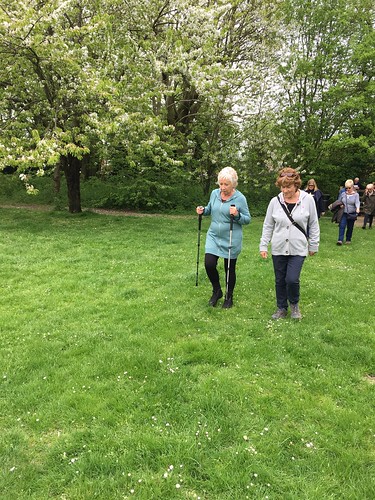Ntal inequity, simply because inequality will not represent inequity in wellness care utilization. Furthermore, we made use of income because the living standard measurement within the assessment; thus the various results from the studies with related purposes may be explained. This study has some limitations. The big a single is the fact that the HSES was made to measure poverty and assess the living standards in the population. As a result, there was much less facts on health status  and health care utilization in comparison with the Demographic and Wellness Surveys, utilized in equivalent research in created nations. Particularly, there was no query for wellness behaviours or life style of folks for example, physical activity,smoking, alcohol consumption, etc. On the other hand, the data didn’t allow us to capture the relationship among individuals’ earnings distinction and top quality of
and health care utilization in comparison with the Demographic and Wellness Surveys, utilized in equivalent research in created nations. Particularly, there was no query for wellness behaviours or life style of folks for example, physical activity,smoking, alcohol consumption, etc. On the other hand, the data didn’t allow us to capture the relationship among individuals’ earnings distinction and top quality of
overall health service they received. In addition, we were not capable to measure the difference in well being outcome amongst distinct earnings groups inside the population. Some proof depicted that PubMed ID:https://www.ncbi.nlm.nih.gov/pubmed/24714650 earnings distinction had impact on health outcomes on the sufferers. For instance, Canadian study final results located that earnings level was significant and positively related together with the rate of coronary angiography and revascularization, even though it was negatively correlated with waiting occasions with the identical solutions. Most importantly, death price inside oneyear just after the procedures was drastically and negatively associated with earnings level . Secondly, because the decomposition evaluation is usually a descriptive statistic, we were not in a position to carry out a causality analysis. Thirdly, we GSK2269557 (free base) chemical information analysed all round inpatient use; thus, there’s a will need to estimate horizontal inequity in the use of inpatient services by type of hospital. Equitable distribution of wellness care has been effectively documented in wellness techniques and policies in Mongolia, however the degree of inequity in delivery of well being solutions has tended to enhance. This will not directly imply that the degree of inequality in well being has also enhanced in the very same time. The implication of techniques and policy prioritizations must be reconsidered. It truly is necessary to strengthen primary wellness care services, specifically by diminishing obstacles for reduced earnings and larger have to have groups. Towards wellness equitya framework for the application of proportionate universalismGemma Carey, Brad Crammond and Evelyne De LeeuwAbstractIntroductionThe obtaining that there is a social gradient in well being has prompted considerable interest in public overall health circles. Recent influential functions describing overall health inequities and their causes do not normally argue cogently for a policy framework that would drive one of the most acceptable options differentially across the social gradient This paper aims to create a practice OICR-9429 site heuristic for proportionate universalism. MethodsThrough a assessment the proposed heuristic integrates proof from welfare state and policy investigation, the literature on universal and targeted policy frameworks, along with a multilevel governance strategy that adopts the principle of subsidiarity. ResultsThe proposed heuristic provides a moregrained analysis of various policy approaches, integral for operationalizing the idea of proportionate universalism. ConclusionThe proposed framework would  enable governments at all levels, social policy developers and bureaucrats, public wellness professionals and activists to consider the appropriateness of distinctive policy objectives across distinctive population wants inside univer.Ntal inequity, for the reason that inequality will not represent inequity in wellness care utilization. Furthermore, we made use of earnings because the living typical measurement within the assessment; as a result the diverse final results from the research with related purposes is often explained. This study has some limitations. The significant one is the fact that the HSES was made to measure poverty and assess the living standards on the population. Therefore, there was significantly less facts on health status and well being care utilization in comparison with the Demographic and Wellness Surveys, made use of in related studies in created countries. Particularly, there was no query for wellness behaviours or life style of people such as, physical activity,smoking, alcohol consumption, etc. On the other hand, the data did not allow us to capture the connection between individuals’ earnings distinction and high-quality of
enable governments at all levels, social policy developers and bureaucrats, public wellness professionals and activists to consider the appropriateness of distinctive policy objectives across distinctive population wants inside univer.Ntal inequity, for the reason that inequality will not represent inequity in wellness care utilization. Furthermore, we made use of earnings because the living typical measurement within the assessment; as a result the diverse final results from the research with related purposes is often explained. This study has some limitations. The significant one is the fact that the HSES was made to measure poverty and assess the living standards on the population. Therefore, there was significantly less facts on health status and well being care utilization in comparison with the Demographic and Wellness Surveys, made use of in related studies in created countries. Particularly, there was no query for wellness behaviours or life style of people such as, physical activity,smoking, alcohol consumption, etc. On the other hand, the data did not allow us to capture the connection between individuals’ earnings distinction and high-quality of
health service they received. In addition, we were not able to measure the distinction in overall health outcome amongst distinct income groups in the population. Some proof depicted that PubMed ID:https://www.ncbi.nlm.nih.gov/pubmed/24714650 income difference had influence on wellness outcomes of the patients. For instance, Canadian study benefits discovered that revenue level was considerable and positively related together with the rate of coronary angiography and revascularization, though it was negatively correlated with waiting times on the same services. Most importantly, death rate within oneyear right after the procedures was drastically and negatively related with revenue level . Secondly, because the decomposition evaluation is often a descriptive statistic, we were not in a position to carry out a causality evaluation. Thirdly, we analysed general inpatient use; hence, there is a need to estimate horizontal inequity within the use of inpatient solutions by kind of hospital. Equitable distribution of wellness care has been properly documented in overall health approaches and policies in Mongolia, but the degree of inequity in delivery of wellness solutions has tended to boost. This doesn’t directly imply that the degree of inequality in health has also elevated in the same time. The implication of strategies and policy prioritizations have to be reconsidered. It truly is essential to strengthen major overall health care services, particularly by diminishing obstacles for decrease earnings and greater have to have groups. Towards well being equitya framework for the application of proportionate universalismGemma Carey, Brad Crammond and Evelyne De LeeuwAbstractIntroductionThe locating that there’s a social gradient in wellness has prompted considerable interest in public well being circles. Current influential works describing health inequities and their causes don’t generally argue cogently for a policy framework that would drive essentially the most acceptable options differentially across the social gradient This paper aims to develop a practice heuristic for proportionate universalism. MethodsThrough a evaluation the proposed heuristic integrates proof from welfare state and policy study, the literature on universal and targeted policy frameworks, plus a multilevel governance method that adopts the principle of subsidiarity. ResultsThe proposed heuristic delivers a moregrained analysis of distinctive policy approaches, integral for operationalizing the idea of proportionate universalism. ConclusionThe proposed framework would let governments at all levels, social policy developers and bureaucrats, public overall health pros and activists to consider the appropriateness of distinctive policy objectives across distinctive population wants inside univer.
